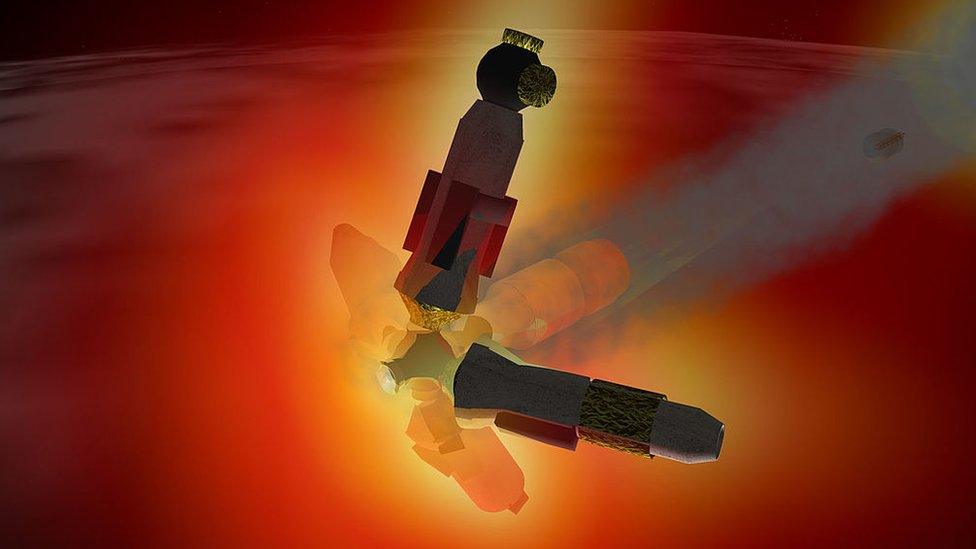Finding Point Nemo: Yorkshireman explores world's most remote locations
- Published
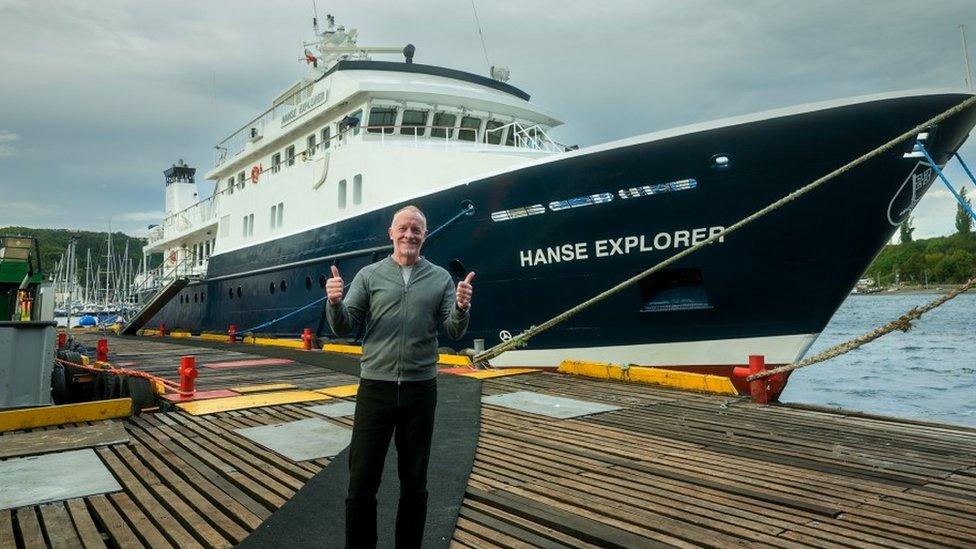
Explorer Chris Brown sailed to Point Nemo aboard the Hanse Explorer
When explorer Chris Brown reached the remotest place on the planet, being attacked by an albatross was the last thing he expected.
The 62-year-old is currently on a mission to become the first person to visit each of the world's eight poles of inaccessibility - the places furthest from the sea or land.
His most recent expedition took him to Point Nemo, which is located in the South Pacific Ocean between New Zealand and Chile, and 1,670 miles (2,688km) from land.
The so-called oceanic point of inaccessibility is so remote, one is at times closer to astronauts aboard the International Space Station than anyone on dry land.
The digital marketing manager, his son Mika, 30, and the crew of the Hanse Explorer set sail on 12 March from Puerto Montt in Chile.
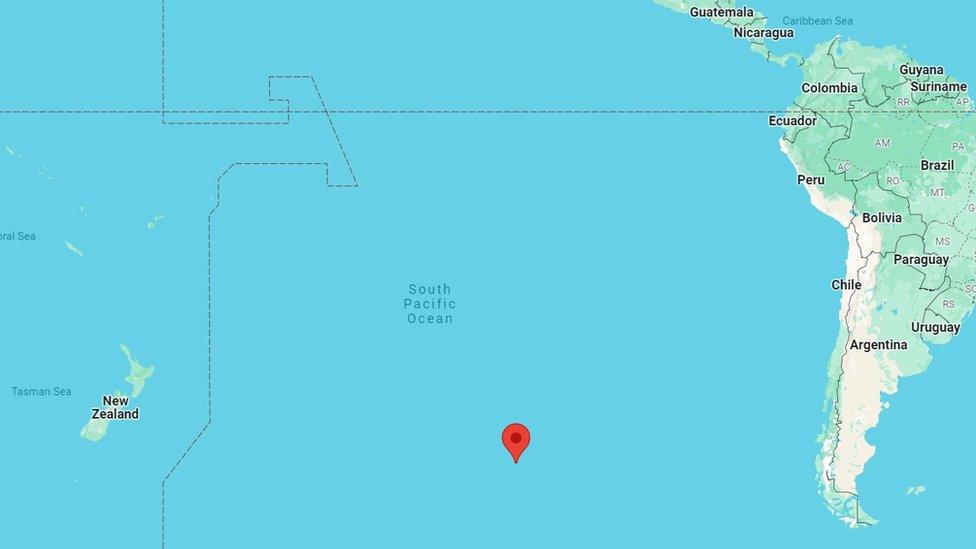
Point Nemo is in the South Pacific Ocean between New Zealand and Chile
During their voyage, they were faced with waves the size of "a standard detached house in the UK", seasickness, and an incoming hurricane.
"I can firmly say I'm a land lover, I don't have sea legs that's for sure," the father of two said.
Despite the rough seas and temperamental weather, the biggest danger to the crew was not the elements but rather the distance to land, said Mr Brown, who is from Harrogate in North Yorkshire.
"You are just so far from everything," he explained.
"If we'd had any difficulties it would've been days before anybody would've come to help, so it was quite dangerous in that respect."
On 20 March they reached their destination and decided to go for a swim in the sea, which has an average temperature of about 7C (44F).
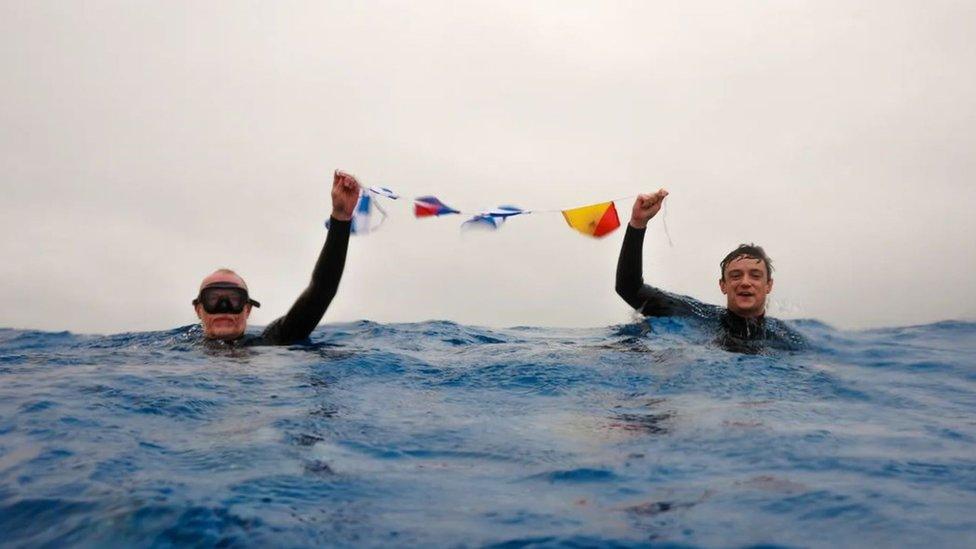
Mr Brown (left) and his son Mika with bunting that spells out Nemo in maritime flags
Mr Brown is pretty confident no-one before him has taken a dip at Point Nemo - or been attacked by a large seabird.
"When we got in the water, an albatross took extreme interest in us and came down and attacked the guy who was videoing the expedition," he recalled.
"An albatross is actually a huge bird, it's got a 3.4m wingspan which is more than twice my height."
What is Point Nemo and where is it?
Mr Brown described the attack as "fairly concerning" but said that the presence of wildlife at all had been a surprise.
"It is quite well-documented that Point Nemo is supposed to have very low biodiversity. The albatross wasn't on its own, there were about 20 other birds around."
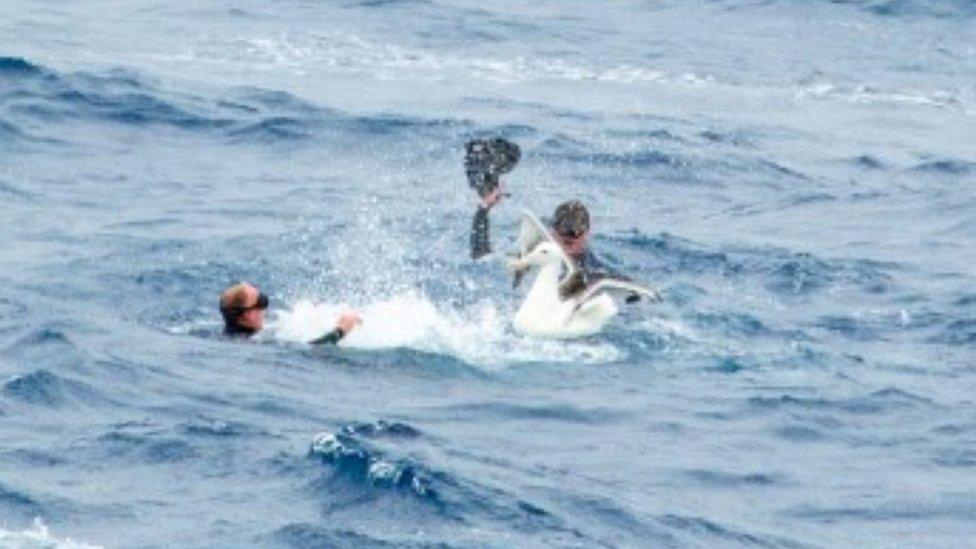
Mr Brown and his team were attacked by an albatross at Point Nemo
Mr Brown's idea to visit the poles of inaccessibility was years in the making.
He first learned about the different South Poles, including the southern pole of inaccessibility, while visiting Antarctica in 2016 as part a group trip that also included astronaut Buzz Aldrin.
Two years later, while attending the "world's highest dinner party" on Mount Everest to raise funds for Community Action Nepal, he was inspired by a group of mountaineers climbing the highest peaks on every continent.
He began to wonder whether he could complete a similar challenge.
He said: "I cut my mind back to 2016 and thought... why don't I try and do the poles of inaccessibility in each continent instead of climbing mountains in each one?"
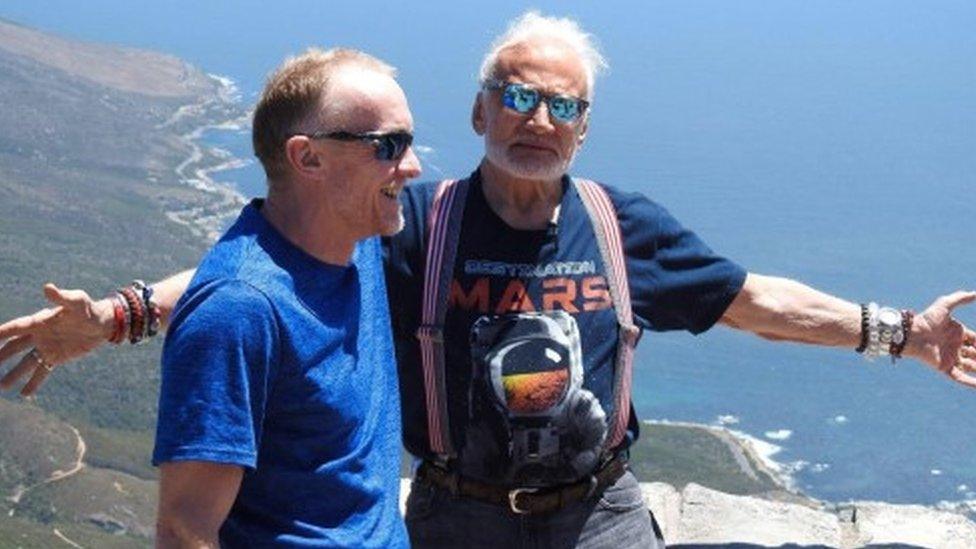
Mr Brown with astronaut Buzz Aldrin before they headed to Antarctica
Eight years later and Mr Brown, who got the "travel bug" while backpacking through South America as a student, has visited six poles of inaccessibility.
Following his successful trip to Point Nemo, he returned to dry land on 31 March and, after a well-deserved beer in Tahiti, embarked on his journey back to Yorkshire - this time on a plane, as he'd had "enough of boats".
"Whenever I reach one of those poles of inaccessibility people always ask 'what's next?' rather than 'oh, you've just done one, do you need a rest?'," Mr Brown said.
"Somebody said to me 'what's the first thing you are going to do when you get to dry land' and my answer was: 'stand on it'."

Follow BBC Yorkshire on Facebook, external, X (formerly Twitter), external and Instagram, external. Send your story ideas to yorkslincs.news@bbc.co.uk, external
- Published21 October 2017
